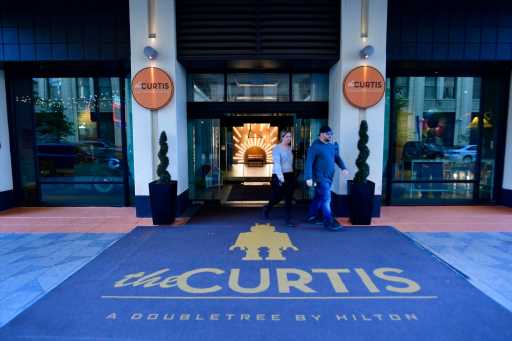Colorado’s economy posted strong job gains in October, with lackluster gains for September revised significantly higher, a sign that growth in the state continues to chug forward despite a rising tide of COVID-19 cases, inflationary pressures and other concerns, according to an update Friday from the Colorado Department of Labor and Employment.
Employers in the state added 10,600 nonfarm payroll jobs from September to October, with the private sector adding 10,000 of those jobs and the public sector adding 600, according to a survey of business establishments. Gains for September, which initially came in at a lackluster 5,100 jobs, were revised higher to a monthly gain of 9,700 jobs, mirroring strong upward revisions made nationally.
“What we originally had reported as pretty weak gains in the U.S. in terms of employment change for August and September now look pretty decent,” said Ryan Gedney, a senior labor economist with the department during a news briefing Friday morning.
Employment in the state, which is measured from a separate household survey that includes the self-employed, rose by 11,900 last month, surpassing the gain of 3,400 in the state’s labor force. The state’s seasonally adjusted unemployment rate fell from 5.6% in September to 5.4% in October as more unemployed workers found jobs.
Leisure and hospitality is the top sector hiring in Colorado this year, accounting for about 64% of the jobs gained in 2021, Gedney said. Last month, of the 10,600 jobs added, 5,100 were at hotels and food service providers and 1,700 at arts, entertainment and recreation establishments.
But the recovery is lumpy elsewhere, with mining and logging, which covers oil and gas production, information and other services, a broad catchall category, registering monthly declines in October. Construction firms have shed 1,200 jobs over the past year, despite a backlog of projects to complete.
The share of Coloradans participating in the labor force held at 68.2%, which is the fourth-highest rate in the country. One reason the state’s unemployment rate ranks 31st highest among all states is that more Colorado residents are actively working or looking for work, Gedney said.
Colorado has recovered about 87% of the private sector jobs lost in March and April of last year, ahead of the 85% recovery seen nationally, Gedney said.
Colorado Springs is the first and only metro area in the state to surpass its pre-pandemic job counts, at 102%, while Denver is matching the state recovery rate. Grand Junction, Fort Collins, Pueblo and Boulder have job recovery rates in the 70% to 74% range, while Greeley is the state laggard, having restored about half of the private-sector jobs it had before the pandemic hit. The 47 counties outside a metro area are about 86% recovered when it comes to jobs.
A separate report Friday from the U.S. Department of Labor on job openings and turnover showed Colorado hit another record high quit rate of 4.3% in September up from a record 3.4% in August. Since 2001, Colorado’s quit rate, which excludes retirements, has averaged 2.4% a month, so a 4.3% rate represents significant churn in the market, equivalent to about one out of 23 workers quitting their current jobs in a single month.
“Currently, there is significant but erratic momentum in the economy. At the same time, there are major headwinds,” said Broomfield economist Gary Horvath. Those headwinds include inflation, labor shortages, supply chain disruptions, government overspending, the country’s ideological divide, not to mention a pandemic that refuses to subside.
So far, the momentum has an advantage over the headwinds, Horvath said, and Colorado’s economy continues to plow forward.
Source: Read Full Article
